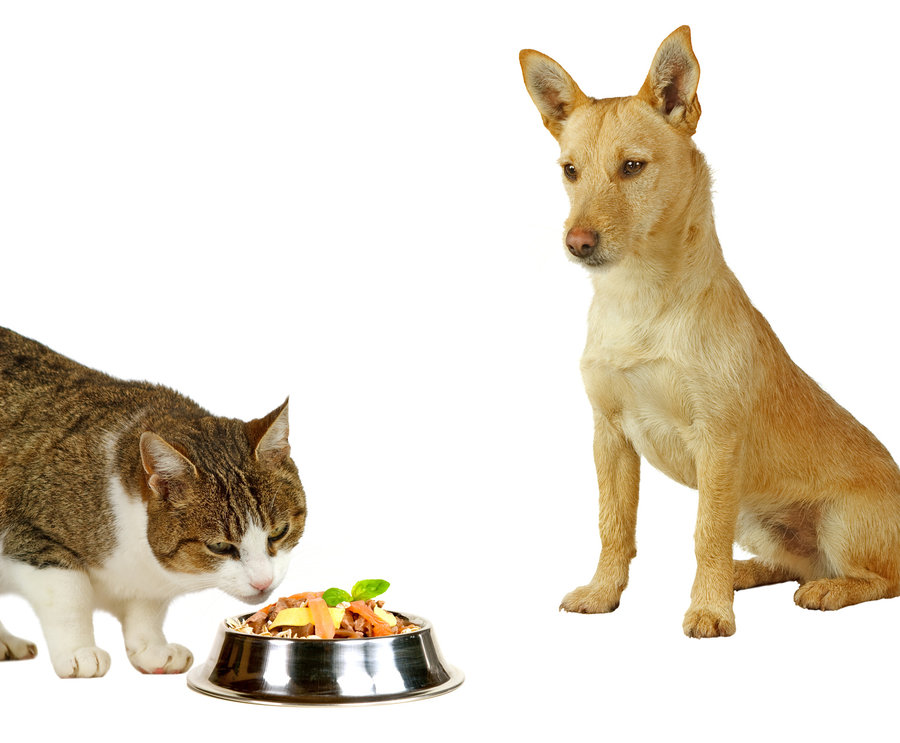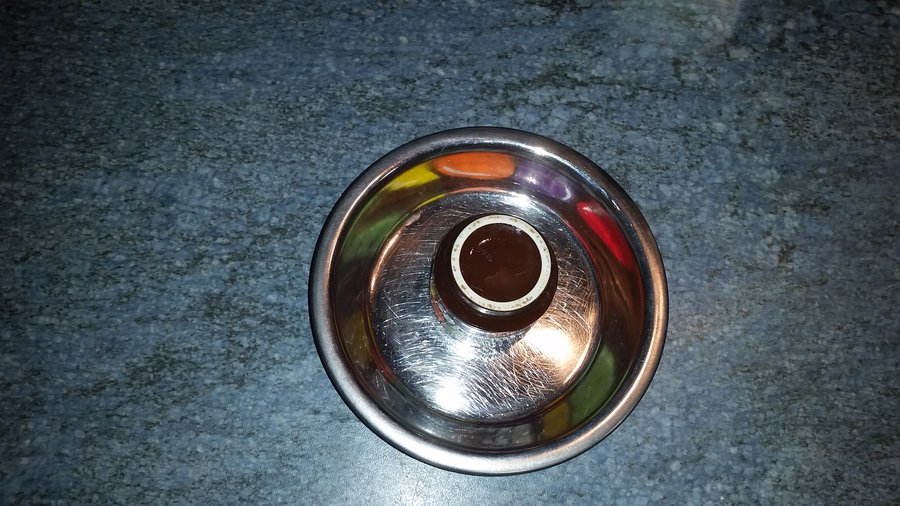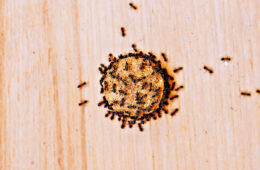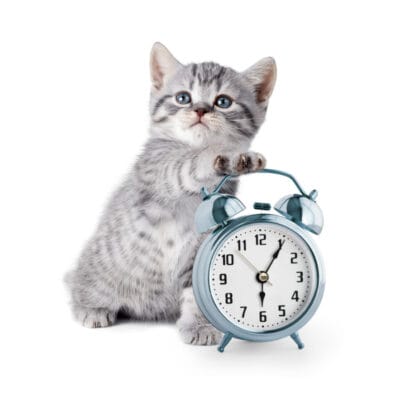
Kitty parents find themselves wanting to transition from free-fed kibble to timed meals and/or a new type of food for many reasons:
- The need to monitor food intake in multi-cat homes
- Kitty health
- As part of a transition to canned, raw, or homemade food, where the food is not left out and must be fed as individual meals.
An important note: starving cats into eating doesn’t work and can be dangerous, especially in overweight kitties.
For a discussion of how much food your cat needs to eat, please see How Much Food Should I Feed My Cat?
Hunger, however, IS good for them (and a motivator in this process).
The Key to a Successful Transition: The Concept of Meals
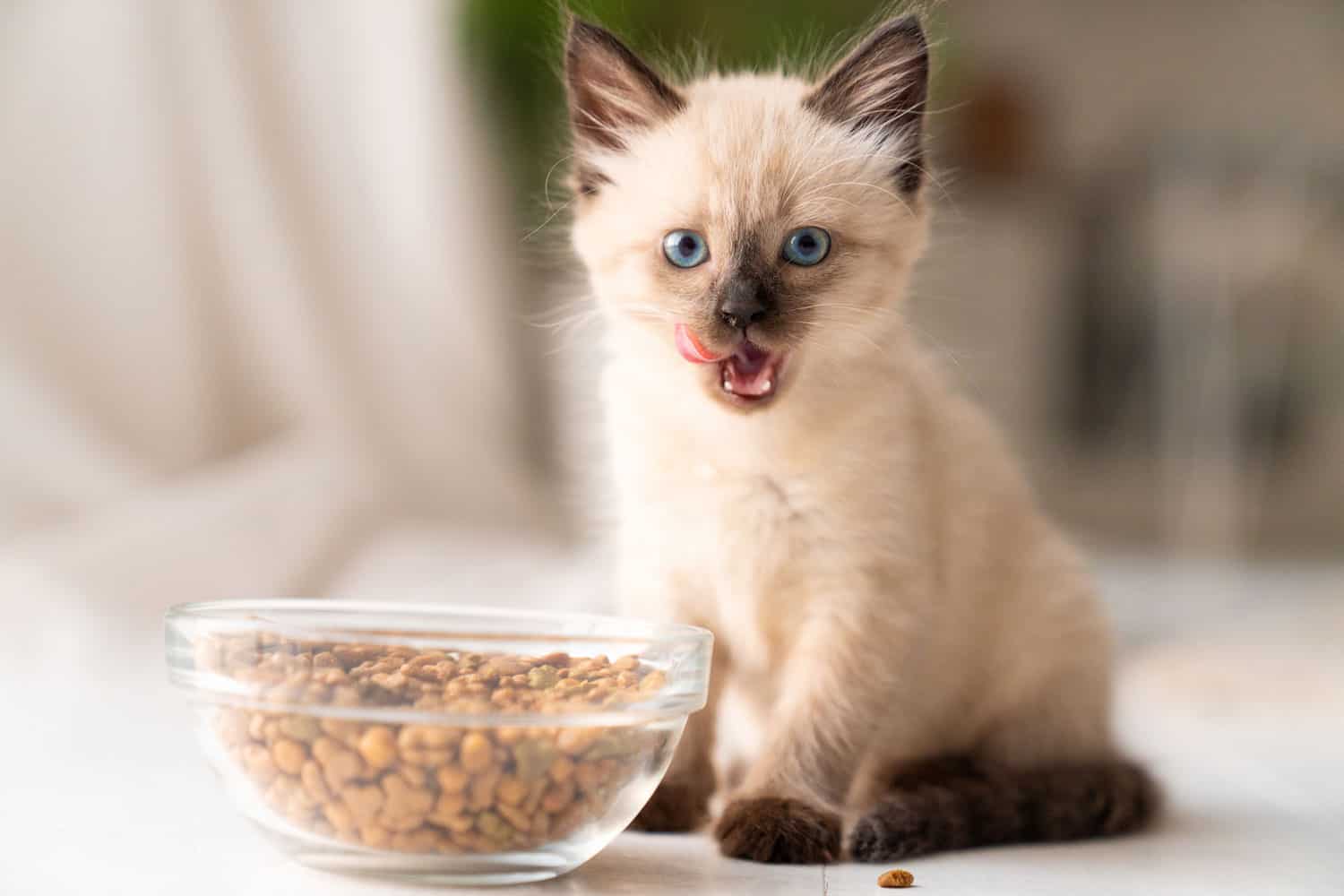
Obviously critical to a successful transition to timed meals is getting those nibblers to eat enough food AT meals. The components of establishing “mealtime” are:
The Time
Establish a routine for the TIMING of meals.
Determine when and how often you can feed meals.
Feed meals as close to the same time every day as possible (at least during the transition).
If you are usually home during the day, if you can feed 8 or 10 small meals over the course of a day (at first), you’ll be able to pull that free-fed kibble sooner.
If you work, you may need to leave the kibble out (or out part-time) at first to ensure your cat is eating enough calories daily.
SIGN UP FOR THECATSITE'S EMAIL UPDATES >
The Place
Designate a specific AREA where meals are fed.
This is part of the routine: an established place for eating meals.
This should be someplace that is as different as possible from where their free-fed kibble is or was – but a place where you want them eating.
A different part of the kitchen (or whatever) is fine.
DO NOT CHASE AFTER YOUR CAT TO GET THEM TO EAT.
Mealtime is at THIS time, in THIS place.
The Signal
Designate a “call” that signals to your cat that it IS meal time.
Pick a word, phrase, or sound, and get your cats associating that word, phrase, or sound with coming to eat.
The Amount of Food
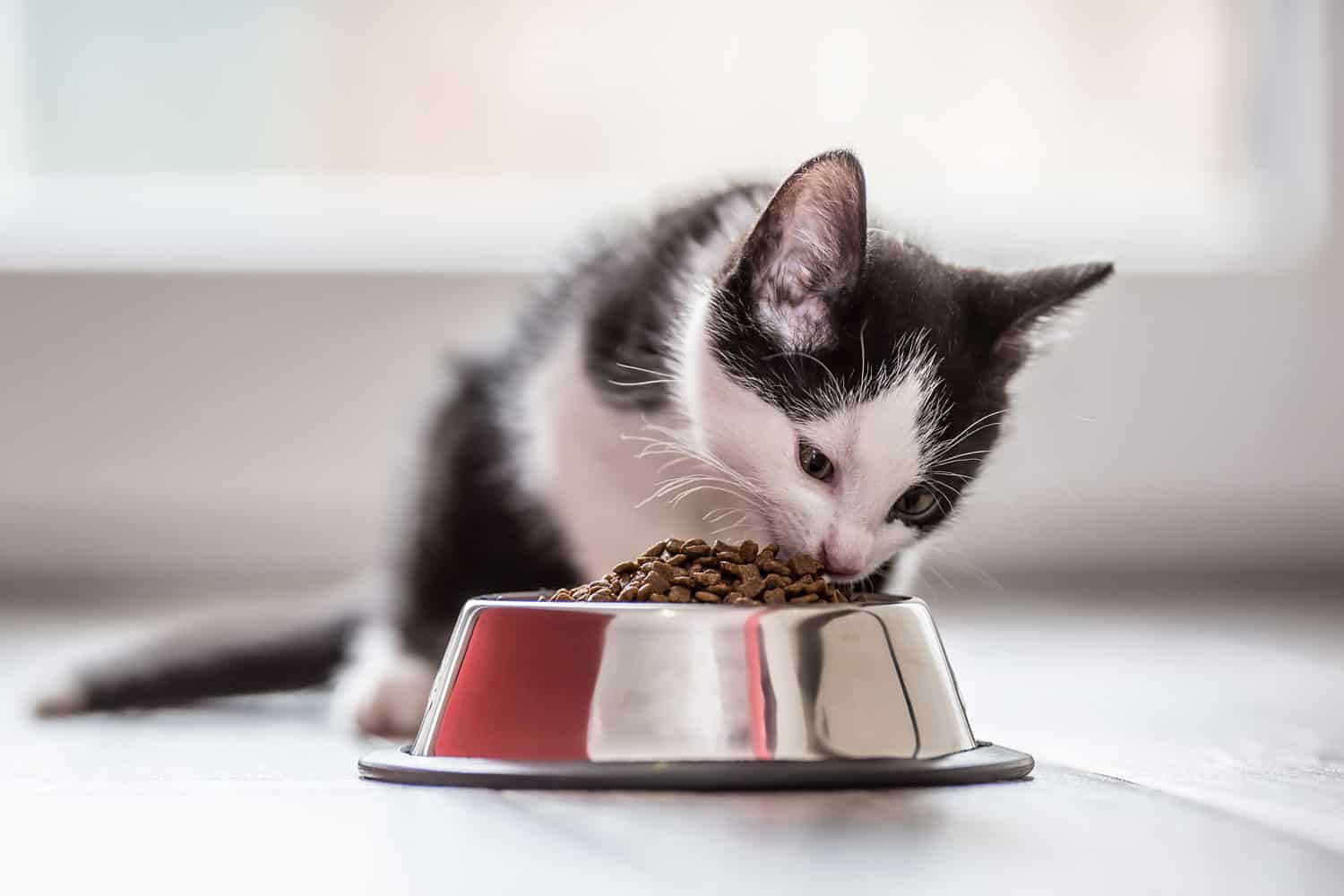
Free-feeding is when food is left behind after eating.
A meal is where all of the food is consumed in one sitting. Set your cat up to be successful!
Determine how much food your cat(s) will eat in one sitting.
Put whatever you’re going to feed them down for 10 to 15 minutes – or just pull it up after they eat some and leave.
How much did they eat? 10 pieces of kibble? Half an ounce of canned food? One quarter can of food? A one-quarter ounce of raw or homemade?
Whatever you’re using, and whatever that amount is, for subsequent meals, put out that amount of food. Do not expect them to eat more than that at “meal time” at first.
Pulling the Free-Feeding Kibble
It is how much food your kitties will consume at those designated meal times that determine how often you need to feed them OR when you can pull the free-fed kibble if your schedule is not flexible enough to feed as many meals a day as they “need” at first.
Pulling the free-fed kibble can be done in stages.
If you are not at home to feed many small meals, you can start by pulling the food when you get up, and putting down a measured amount of kibble before you go to bed.
During the day, feed only meals.
If your cat is hungry after a meal, increase the amount of food offered (up to the point that the amount they should be consuming daily has been divided into the number of meals you are targeting).
Some cats will transition to timed meals within a few weeks.
Some cats may take a few months (or more). The time required is usually related to age.
Do not push kitty because you are frustrated. The last thing you need is a stressed, confused cat.
This is not a race! Go at kitty’s pace.
How Many Meals is Ideal?
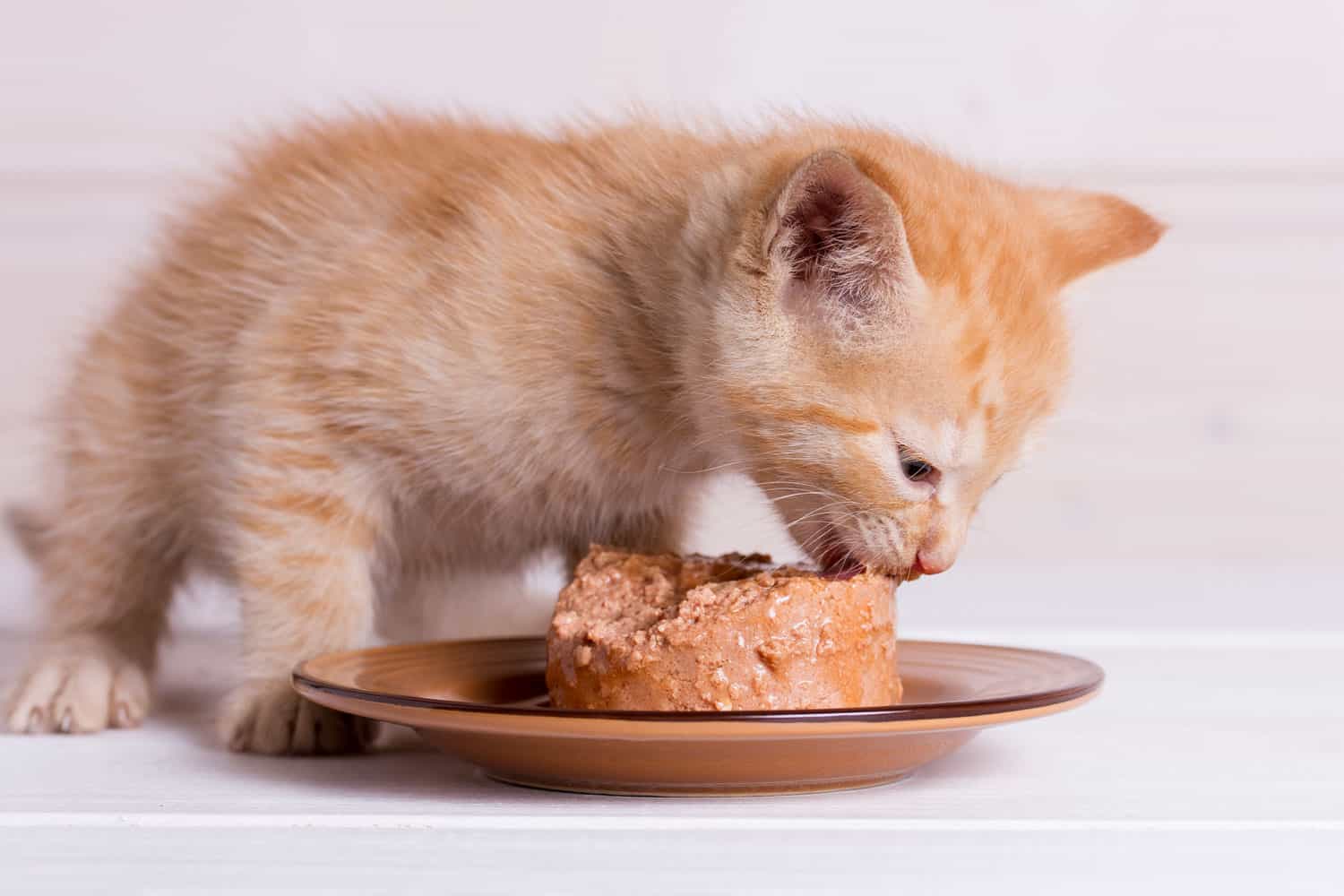
According to the Nutrient Requirements of Dogs and Cats by the Nutrition Research Council, domestic cats relying on their hunting skills in the wild typically eat 8 to 12 very small meals a day.
But this usually isn't practical for our human schedules. Combining our schedules with their needs, most cats do well with two to three meals a day.
Young kittens need to be fed more frequently: until they are older than four months, kittens’ stomachs are not large enough to accommodate three meals a day.
Click Here To See This Book On Amazon
Meals for our cats do not need to be evenly spaced. Many find that before work, after work, and before bed works well, whatever that schedule is.
Managing Morning Meals
When you begin feeding timed meals, if you ever want to sleep in peace again, do not stumble half-awake out of bed and feed your kitties first thing.
You do not want "waking up" to be the trigger that identifies feeding time.
Find something to become part of the morning routine that happens before you feed them: make the coffee, shower, eat your meal, etc.
Whatever that activity is, allow that to become the trigger that means they'll be fed next after you've completed that activity.
Your kitties need to understand right out of the starting gate that there is no benefit to waking you up for food!
Troubleshooting the Transition
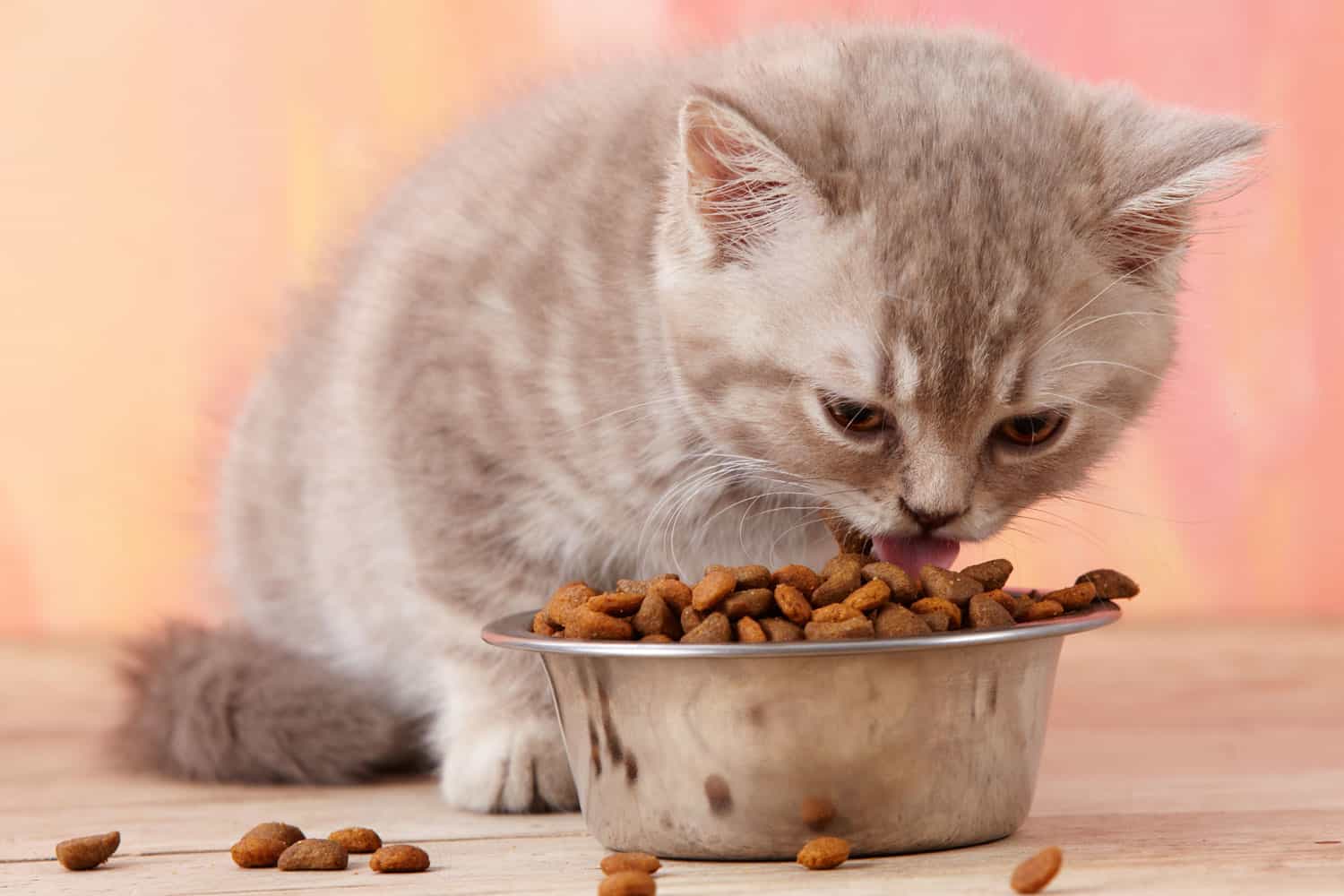
In your transition to timed meals, if you find that kitty vomits bile between meals once you’ve pulled the kibble, this means you do need to feed more frequently.
Their bodies will adjust with time.
Note: the additional food need not be a meal: a small treat may be all they need to absorb the bile build-up and tide them over to mealtime.
The most common times bile build-up vomiting occurs is at night.
You may need to feed the last meal of the day later; the first meal of the day earlier; or leave a measured amount of kibble out overnight.
SIGN UP FOR THECATSITE'S EMAIL UPDATES >
Written by Laurie Goldstein
Laurie Goldstein is a CFA Charterholder. In addition to her work as an equity analyst, she applies her research skill to all things cat, focusing on nutrition and advocacy for feral cat management via trap-neuter-return (TNR) and educational research on cat predation. Learn more about feral cats on her website Stray Pet Advocacy.
Comments? Leave them using the comment section below. Questions? Please use the cat forums for those!
Note: We may get commissions for purchases made through links on this page.


